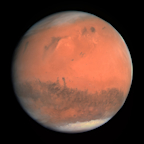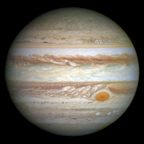Search results
Dark, cold and whipped by supersonic winds, giant Neptune is the eighth and most distant major planet orbiting our Sun. More than 30 times as far from the Sun as Earth, Neptune is not visible to the naked eye. In 2011, Neptune completed its first 165-year orbit since its discovery.
Dark, cold and whipped by supersonic winds, ice giant Neptune is the eighth and most distant planet in our solar system. Neptune is the only planet in our solar system not visible to the naked eye.
Dark, cold, and whipped by supersonic winds, ice giant Neptune is the eighth and most distant planet in our solar system. More than 30 times as far from the Sun as Earth, Neptune is the only planet in our solar system not visible to the naked eye.
May 3, 2024 · Neptune, third most massive planet in the solar system and the eighth and outermost planet from the Sun. Neptune has 14 moons, only two of which were discovered before Voyager 2’s visit in 1989, and a system of rings, which were unconfirmed before Voyager.
6 days ago · Quick History. Neptune was discovered in 1846 by Urbain Le Verrier, John Couch Adams, and Johann Galle. Only Voyager 2 has visited Neptune. What does Neptune look like? Voyager 2 took this picture of Neptune in 1989. Clouds streak across Neptune. Neptune is a very cold, windy world. For more information visit: NASA Solar System Exploration.
Neptune is our outermost planet. Neptune has been visited by only one spacecraft: Voyager 2. The majority of worlds we’ve found around other stars are Neptune-sized. By studying Neptune we learn about other solar systems and whether or not ours is unique. Why we study Neptune.
NEPTUNE is the world's first regional-scale underwater ocean observatory that plugs directly into the Internet. NEPTUNE is the largest installation on the Ocean Networks Canada network of ocean observatories.



















